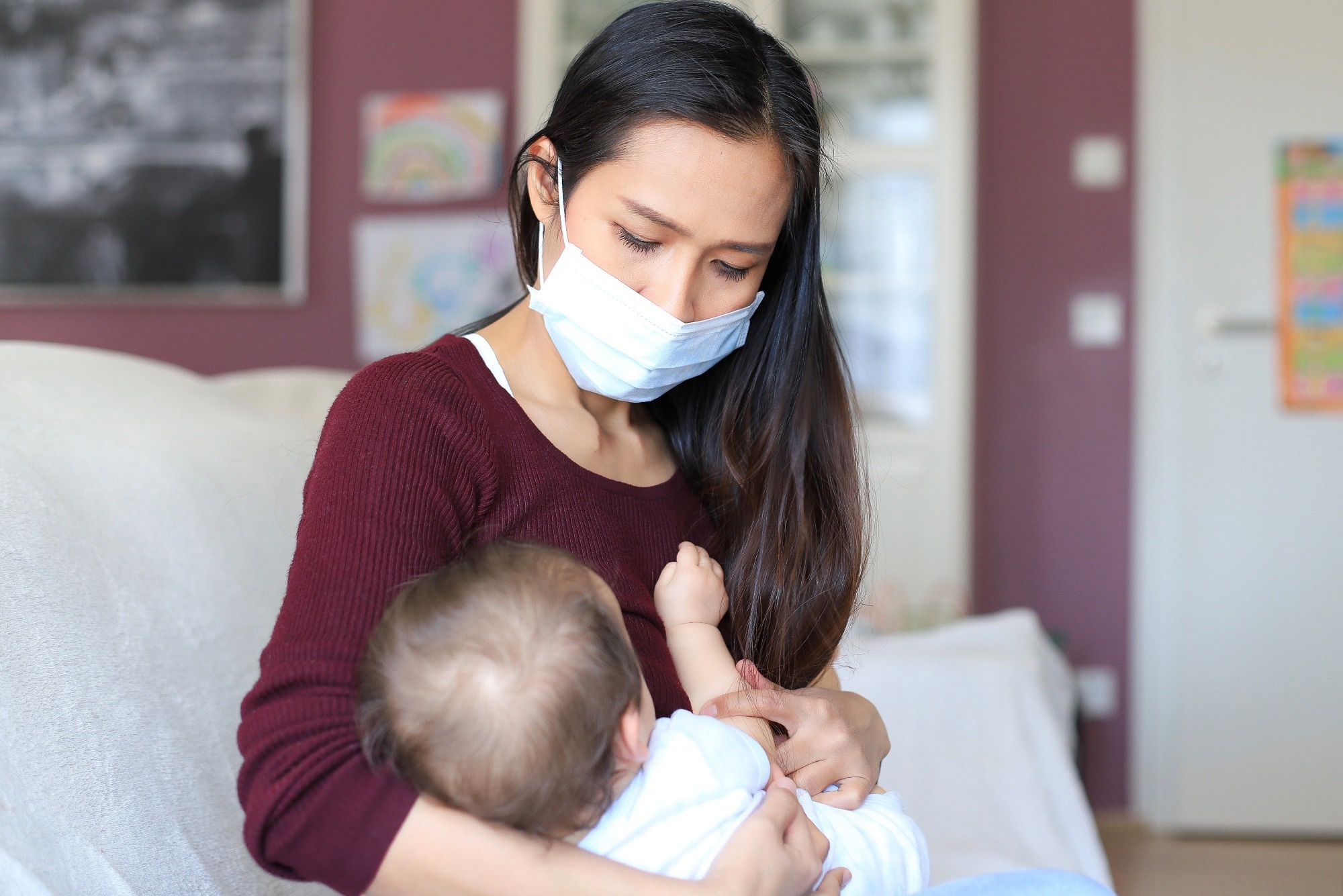In a recent study published in Nature Communications, researchers comparatively evaluated humoral immune responses against severe acute respiratory syndrome coronavirus 2 (SARS-CoV-2) among infants and their mothers.
 Study: Elevated binding and functional antibody responses to SARS-CoV-2 in infants versus mothers. Image Credit: Onjira Leibe/Shutterstock
Study: Elevated binding and functional antibody responses to SARS-CoV-2 in infants versus mothers. Image Credit: Onjira Leibe/Shutterstock
Background
Antibody titers for SARS-CoV-2 may differ between adults and infants, due to multiple factors, such as the developing infantile immunological system and discrepancies in SARS-CoV-2 exposure in the two groups. Data on anti-SARS-CoV-2 titers among infants, which can influence age-associated coronavirus disease 2019 (COVID-19) severity, are limited.
About the study
In the present prospective cohort study, researchers assessed differences in anti-SARS-CoV-2 humoral immunity between mothers and their infants.
The team characterized the binding and functional antibodies against the SARS-CoV-2 Wuhan-Hu-1 strain spike (S) protein, and its subunits, receptor-binding domain (RBD) and N-terminal domain (NTD), in convalescent sera from 36 post-delivery females and 14 SARS-CoV-2-infected infants from an unvaccinated cohort in Nairobi, Kenya.
Serological anti-SARS-CoV-2 titers were measured using enzyme-linked immunosorbent assays (ELISA). Samples were obtained quarterly, and the timing of SARS-CoV-2 infection was estimated as the midpoint for the period between the most recent seronegative specimen and the initial seropositive specimen for all individuals. Whole genomic sequencing (WGS) was performed using stool samples to identify the causative SARS-CoV-2 variant.
To compare anti-SARS-CoV-2 titers between mothers and infants, the initial seropositive sample was tested by a commercial multiplexed electrochemiluminescence platform (MSD) to detect immunoglobulin G (IgG) binding antibody titers and cellular-surface staining assays that measure IgG binding antibody titers to membrane-bound S protein.
A previously used phage-based immunoprecipitation approach was used to delineate epitope binding profiles in sera obtained from mothers and infants, and the binding residues were defined using principal component analysis (PCA). The effects of mutations on antibody binding were evaluated using the “scaled differential selection” metric.
In addition, S protein-pseudotyped lentiviral neutralization assays were performed. Flow cytometry-based cellular assays were performed to evaluate differences in antibody-dependent cellular cytotoxicity (ADCC) activity between mothers and their infants.
Results
The team found significantly higher antibodies for SARS-CoV-2 S RBD and NTD and S protein-expressing cellular surface stains among infants vs. mothers. Serum antibody titers from the mothers and their infants were bound to similar sites of the S protein subunit 2 (S2), including the stem helix-heptad repeat 2 (SH-H) and the fusion peptide (FP).
Responses to SH-H and FP mirrored previously detected epitopes among SARS-CoV-2-infected and vaccine-naïve individuals with mild COVID-19. However, infants displayed higher antibody titers with more consistency in antibody escape in the fusion peptide site compared with mothers. Further, infants showed significantly higher ADCC levels, although, astonishingly, S pseudovirus neutralization by both groups was similar.
ADCC activity remained significantly higher among infants after stratifying by human immunodeficiency virus (HIV) status and on comparing mothers and their infants with asymptomatic SARS-CoV-2 infections.
ADCC activity showed moderate associations with fusion peptide-summed but not SH-H-summed enrichment among aggregated mothers and infants, indicating a probable role of fusion peptide antibodies in regulating ADCC activity.
There were no significant differences between the estimated days of SARS-CoV-2 infection among infants vs. mothers, indicative of similar antibody waning between the groups. Notably, the mothers showed SARS-CoV-2 seropositivity after delivery, indicating that the antibodies present in the infants did not result from passive immunological transfer.
The WGS findings indicated B.1 strain presence in two stool samples. The team observed significantly higher anti-S NTD and RBD IgG titers among infants vs. mothers detected using the MSD method but non-significant differences in anti-SARS-CoV-2 nucleocapsid (N) protein titers.
Likewise, restricting the study to nine mother-infant pairs, significantly higher binding antibody titers were observed among infants across SARS-CoV-2 antigenic proteins, except for the N protein.
Using the cellular surface staining method, humoral responses were significantly higher among infants than those by their mothers. Among infants, mutations centered around the 814–819 residues, spanning over the S2 transmembrane protease site 2 (TMPRSS2)-mediated cleavage sites, led to antibody binding escape.
More variability was observed in the binding escape profiles of mothers with lower escape similarity scores compared to infants; however, the 813-820 residues were common regions of antibody binding escape. Higher anti-S antibody titers among infants did not directly translate to greater SARS-CoV-2 neutralization.
Overall, the study findings showed that infants develop distinct humoral immunity responses to SARS-CoV-2 compared to their mothers, including higher binding antibody titers to the S protein, increased non-neutralizing ADCC levels, and converging antibody escape profiles for the FP site of the S protein. The findings could inform COVID-19 prevention and treatment efforts across ages.